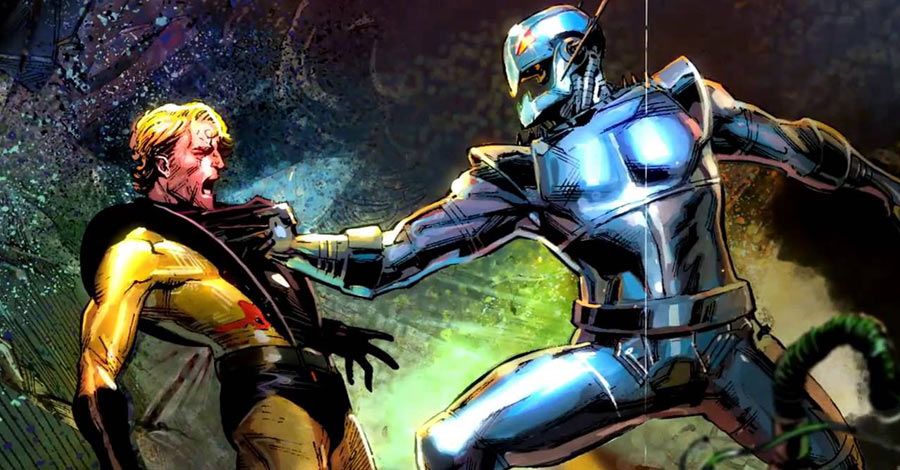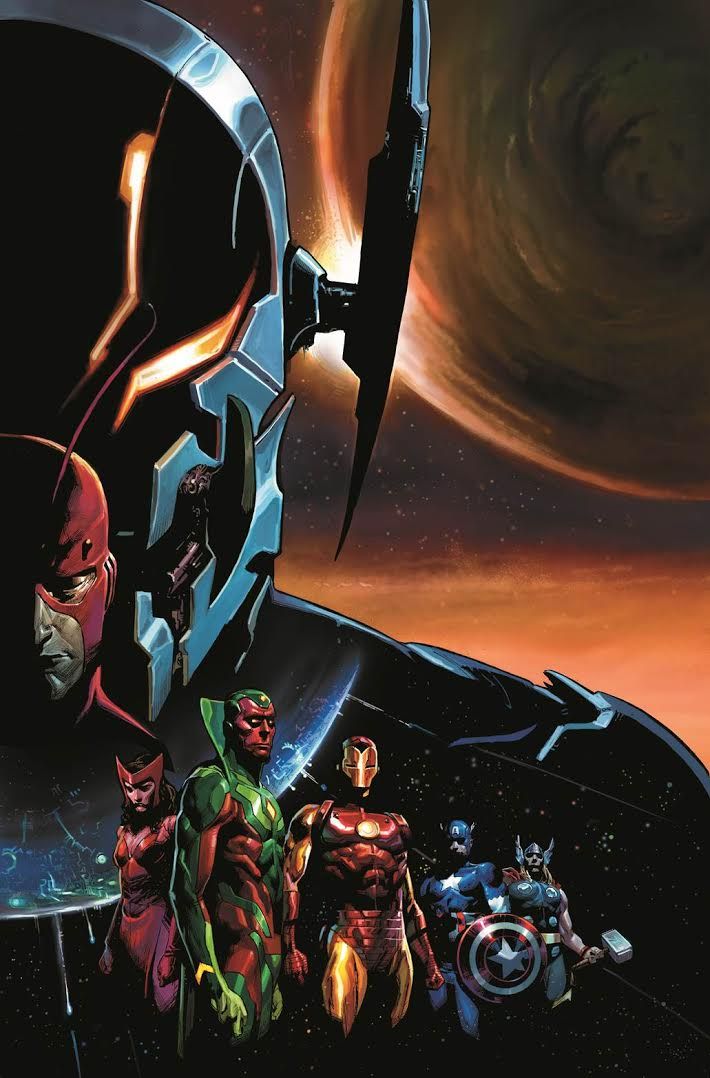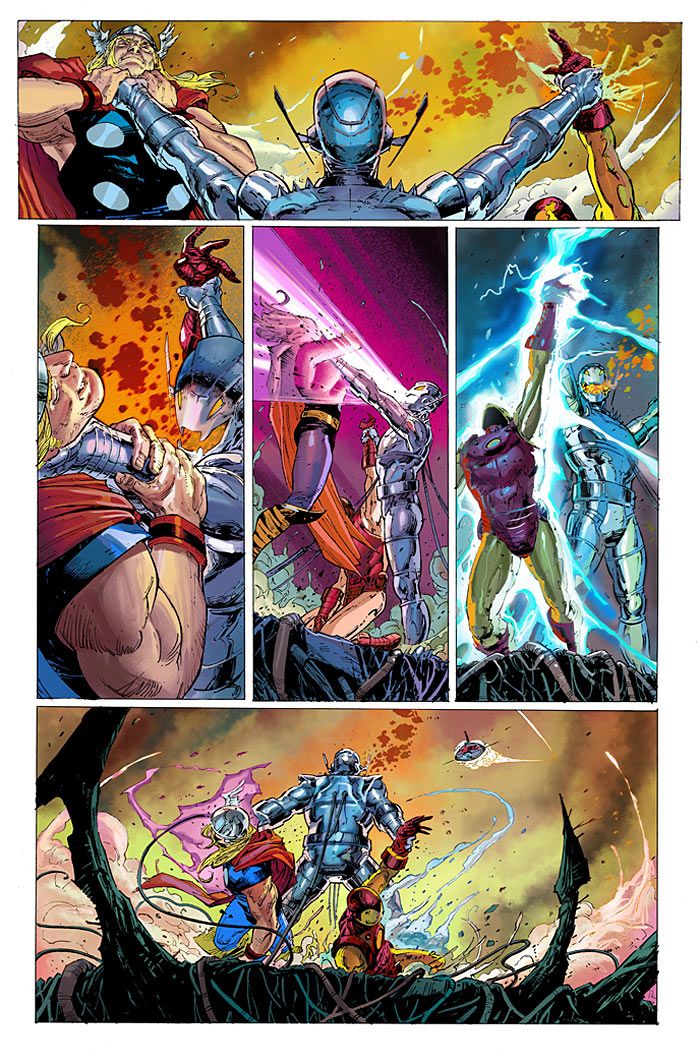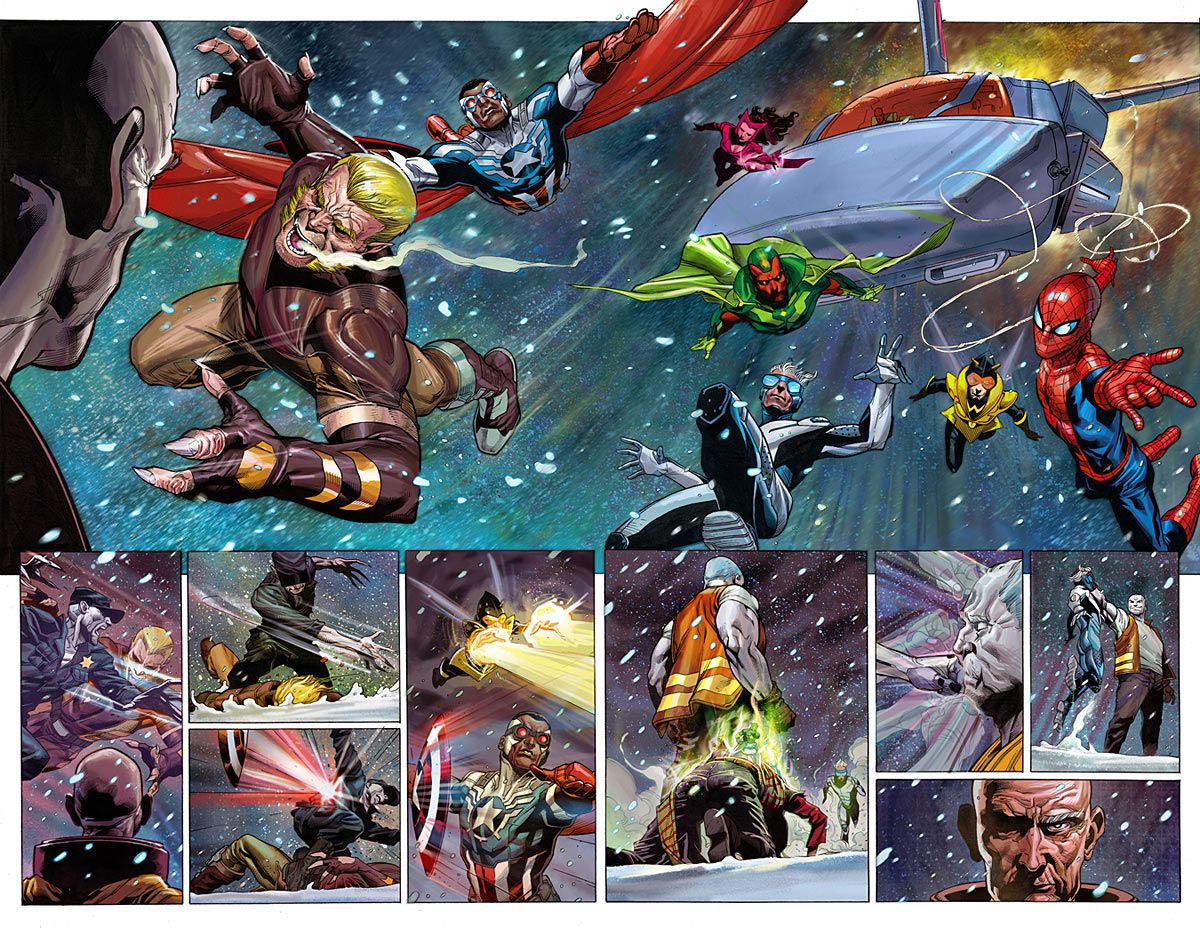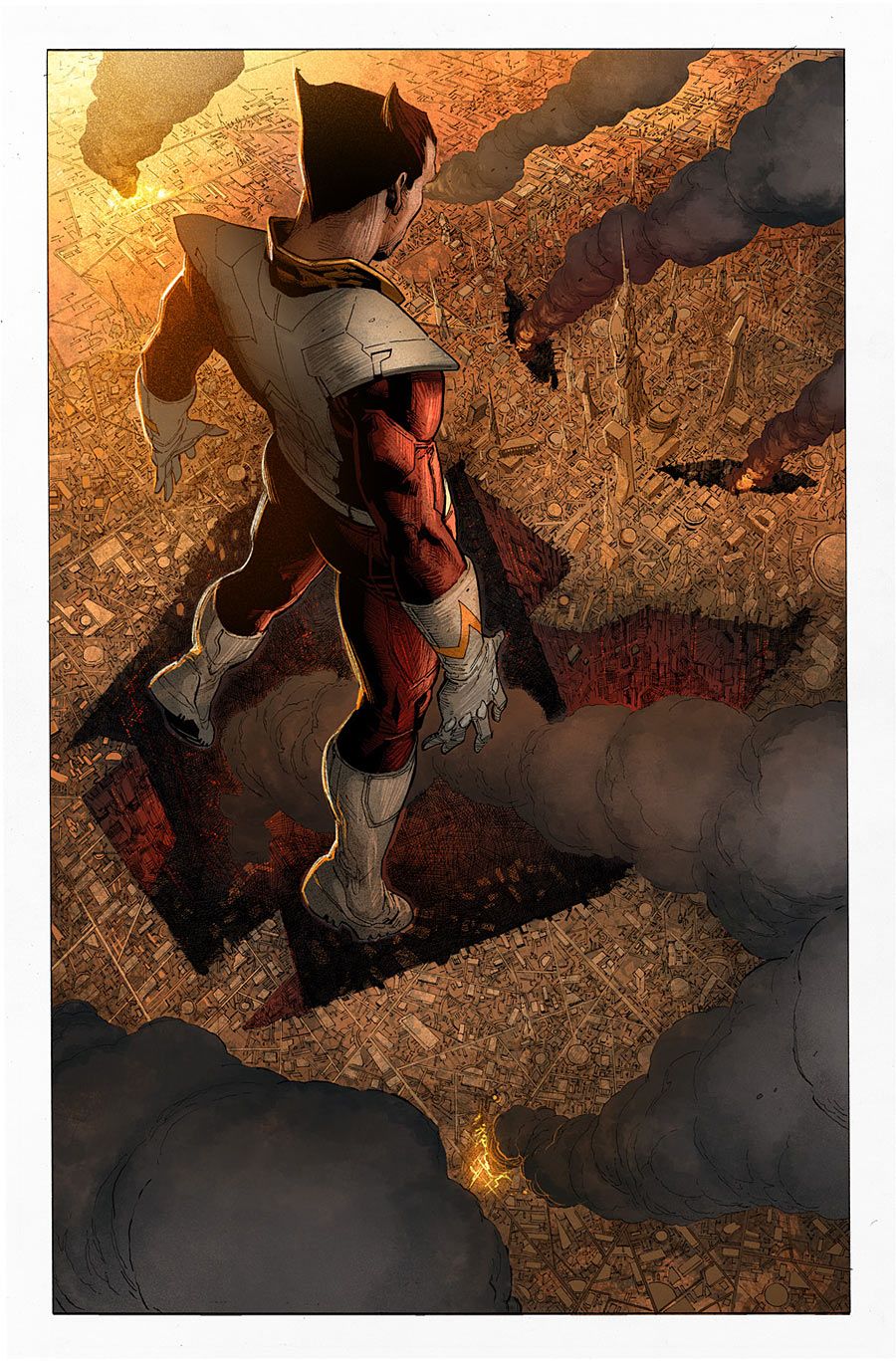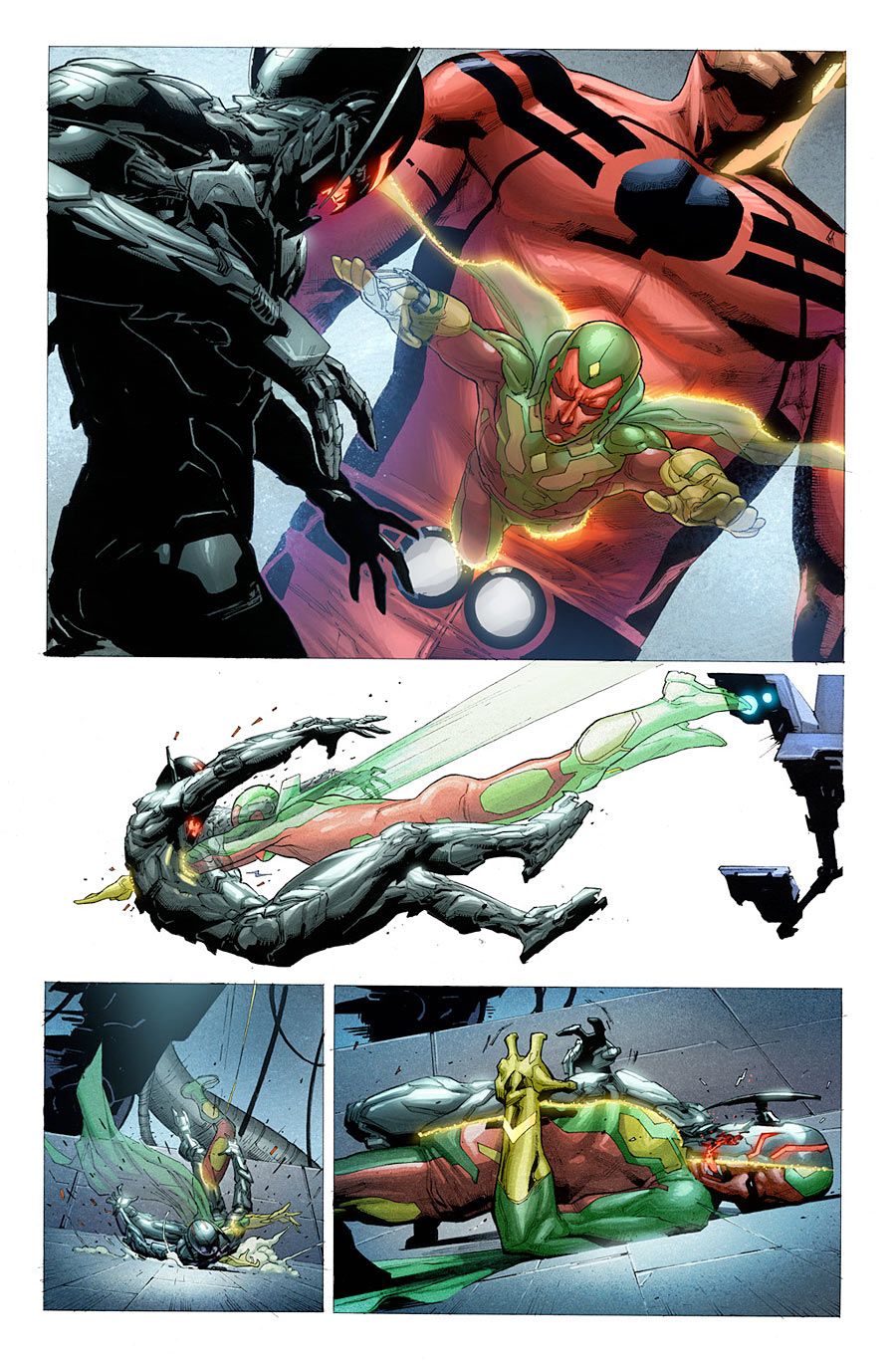SPOILER WARNING: This interview contains spoilers for "Avengers: Rage of Ultron," on sale now.
The Avengers joined forces to battle threats too powerful for any one hero to face alone, and over the years have earned the title of Earth's Mightiest Heroes. But only one foe instantly puts a chill in their blood whenever they cross paths, all due to a personal connection as the villain was created by one of their own.
The genocidal automaton known as Ultron was created by Hank Pym, the first Ant-Man, and introduced to the world in 1968's "Avengers" #54-55 by Roy Thomas & John Buscema. Since then, the murderous A.I. with an Oedipal Complex has returned to plague the world on numerous occasions. In the final issue of the 2013's "Age of Ultron" event, the villain appeared to finally be destroyed. Like most deaths in comics, this one didn't last, and in the recently released "Avengers: Rage of Ultron" original graphic novel by writer Rick Remender and artists Jerome Opena and Pepe Larraz, the titular robot proved evil automatons never die -- they just reboot with a brand new operating system.
Remender Forces the Avengers to Confront the "Rage of Ultron"
In the OGN, Ultron's "son," the Synthezoid known as the Vision, Hank Pym and their fellow Avengers were forced to do battle against a new version of Ultron who had taken over the computers of Saturn's moon, Titan, home to a colony of Eternals. What followed is an epic sci-fi tale about artificial intelligence and fathers and sons, the end of which transformed both Ultron and Hank Pym into very changed characters, merging them into a single unified identity.
CBR News reached out to the always busy Remender for a post-game chat about the book. Remender explained the book's fallout, his love for Hank Pym, and closing out the discussion on artificial intelligences in the Marvel Universe he began back in his "Secret Avengers" run, and how important it is for him to have chemistry with his collaborators.
CBR News: "Rage of Ultron" featured the Avengers battling one of their most dangerous foes, but it's a story that really placed a spotlight on of the team's founders, Hank Pym. Where does your affection for Pym come from?
Rick Remender: When I was still an avid collector "Tales to Astonish" was my fix. I have a very fine to near mint run of that book all the way up to when they turned it into a split series.
I fell in love with Hank as sort of the quintessential bumbling and occasionally dickish, but also kind and funny Avenger. His character was all over the board, even back then, but I always really dug him. I also really dug his sort of kitsch power.
So when I took over "Secret Avengers" [in 2012] I did a ton of research and notes on things I'd like to do with him. I also extrapolated my version of him from various sources. So "Rage of Ultron" was an opportunity to take a story that I never got to complete in "Secret Avengers," where Hank had become temporarily bonded with some Deathlok tech, and I got to complete it here with Ultron and the mighty, mighty Jerome Opena and Pepe Larraz helping out. It was nice to be able to dust off the "Secret Avengers" stuff and tell a big story with it.
It might have just been because you were working with your frequent collaborator Jerome Opena on a science fiction story, but while I was reading "Rage of Ultron" I couldn't help but compare Hank to Heath Huston, the protagonist of "Fear Agent." Do you think Hank and Heath have anything in common?
I think they've endured different kinds of damage. This might be a bit of meta commentary, but to me, Hank is a founding Avenger who gets the least respect and his character is the most scattered. I wanted to apply a reason to that. I wanted to apply something that sort of defined why he was scattered. He was also seeking validation and trying to find the thing that would make him somebody that people revered and gave him the respect he felt was owed and probably was owed.
Heath's damage is a lot more self inflicted due to what he had to do to save Earth during an alien invasion. His damage is also rooted in his family.
So I think that they're different. I tend to lean into scattering internal philosophy into stories the form of internal captions. I think I really got into that with "Fear Agent" and "Strange Girl." That sort of became a hallmark of my writing style and it's something that I enjoy doing. I definitely leaned into that here. So I think what you responded to was probably those things plus the fact that Jerome and I worked together on "Fear Agent" for five years.
The other big characters in this story were Ultron and Vision. Do you view "Rage of Ultron" as a sort of multigenerational story about fathers and sons?
Yeah, I think it really became that. The biggest and sexiest Avengers are not the ones that have emotional and contextual relationships to Ultron. Thor, Cap, and Iron Man don't really have anything to do with Ultron other than trying to stop his attacks on humanity. So it made me a bit nervous to hinge an entire graphic novel that was going to be supporting the biggest movie of the year on Hank Pym and the Vision.
I recognized though that they as father and son to Ultron had the most emotional context and I should not worry myself so much with what seems to be the biggest idea and go with the one that's the most natural. That was to really explore their relationship and to finish up the conversation about artificial intelligence that really fueled much of my "Secret Avengers" run.
In the end it was a risk and sometimes risks don't pay off. It seems like people really enjoyed the book though. So I'm glad that we dug into Hank and the Vision and gave them the spotlight.
Are you finished telling stories with Hank Pym? The final page of "Rage of Ultron," with an Ultronized Hank floating in space, certainly suggests you have more plans for the character.
I already have my next Hank Pym story outlined. [Laughs] There's been a lot of change, though, in what's going on at Marvel and there's been a lot of change in what's coming up. So I'm not sure when or if that story will be told, or if it will be told by somebody else. You just never know how these things will work out in terms of the musical chairs and the dance.
I feel really good about having told a story here that had a beginning, middle and end, and a new Ultron for the Avengers to face. As for whether or not I'll have anything more to do with that? If I did it would be fun, and if I don't I feel pretty satisfied with this story. So if "Rage of Ultron" was my last word on this I'd be okay.
Will any of the fallout from "Rage of Ultron" feed into your remaining issues of "Uncanny Avengers?"
No, I don't want to make people read one thing to understand another. It was important for me to finish off some of the big things that Matteo Scalero and I were exploring in "Secret Avengers." I wanted to take out some of the ideas from that story because they fit so perfectly with Ultron and a lot of them may have originally intended to include Ultron. So this was a really wonderful opportunity to further explore that stuff and put a little end cap on it.
Finishing your exploration of artificial intelligence in the Marvel Universe and doing it with Hank Pym were obviously big draws for you, but I imagine the other big draw of "Rage of Ultron" was collaborating with Jerome Opena again. He was already good and he just seems to get better and better with everything he does, especially when he works with you.
Yeah, Jerome is a phenom, but more than that I've worked with a lot of people now and so much of it is chemistry. [Marvel Editor-in-Chief] Axel Alonso always calls it "voodoo" and I think that's a fair description. You just never know.
I've worked with a lot of great artists where the chemistry just didn't quite work, but Jerome and I have been friends for about 11 years now. We get along really well. We like to talk. We like to collaborate and I think I do my best work in collaborations where the artist wants to work with me and we're pals; where we like to talk and get excited about working on the thing.
When it becomes a sort of conveyor belt where script goes to editor, the editor sends it to the artist, and the artist and I don't speak or there's contention between us I can't perform. I can't write my best work unless I'm working with a pal.
That's why I've been very fortunate to work with guys like Jerome, Greg Tocchini, Tony Moore, Wes Craig, Matteo Scalero and Sean Murphy. We're all pals. I think that makes for a better product because there's a purity of intention. The end result is something that both parties enjoyed the process off making.
Your other pal and frequent collaborator on "Rage of Ultron" is colorist Dean White, who worked with you and Jerome on "Uncanny X-Force."
Yeah, Dean did about the first 30 pages. They're classic, spectacular Dean. He's one of the very best in the industry. He's also a pleasure to work with and a great guy. Seeing him over Jerome obviously was a treat and he's one of the most sought after guys in the industry so he gets pulled around a lot, but having him involved with this for the opening flashback and some stuff after that was great. We got to put the "Uncanny X-Force" team back together even if it was just for that first chunk.
"Avengers: Rage of Ultron" is on sale now from Marvel Comics.

